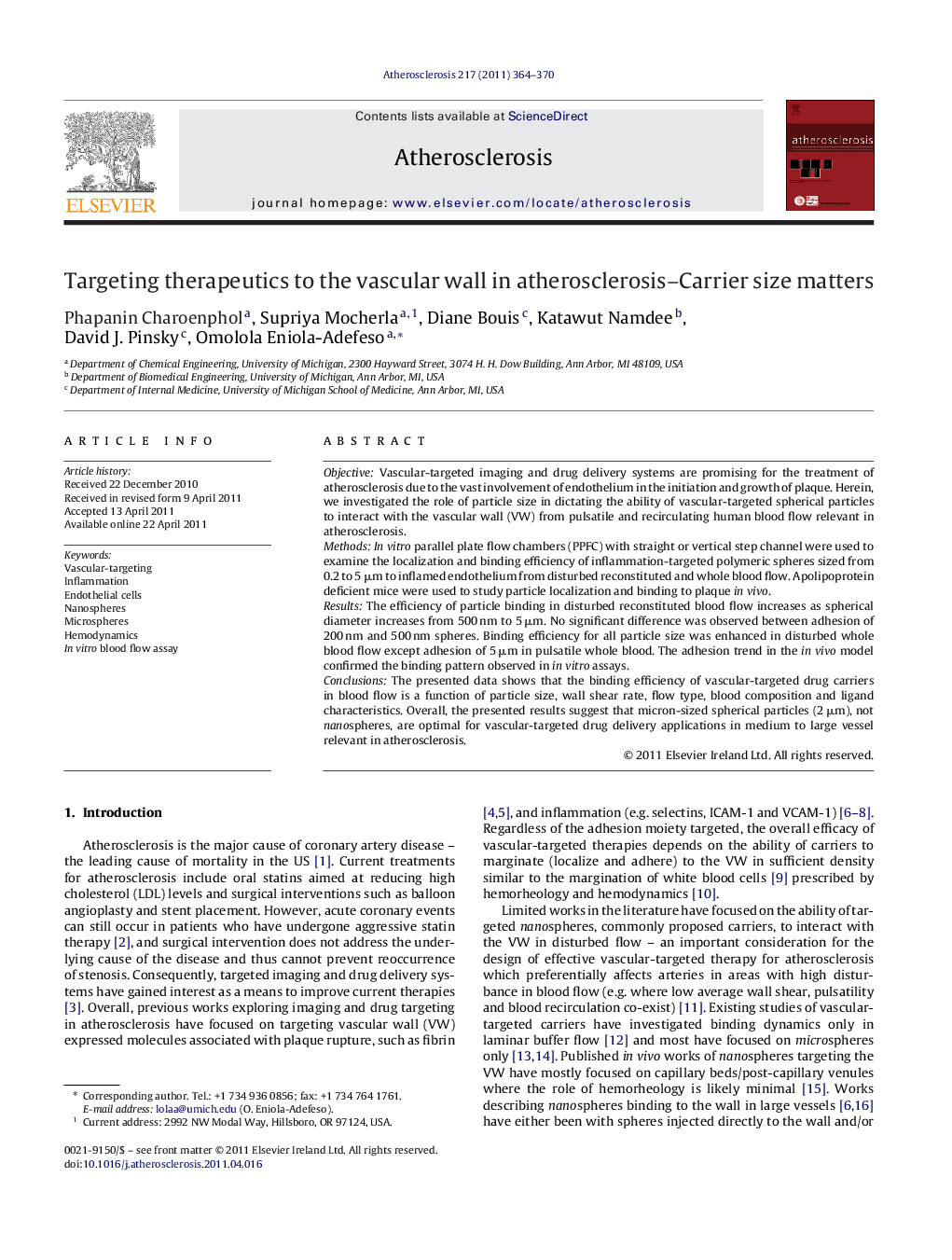| Article ID | Journal | Published Year | Pages | File Type |
|---|---|---|---|---|
| 2892783 | Atherosclerosis | 2011 | 7 Pages |
ObjectiveVascular-targeted imaging and drug delivery systems are promising for the treatment of atherosclerosis due to the vast involvement of endothelium in the initiation and growth of plaque. Herein, we investigated the role of particle size in dictating the ability of vascular-targeted spherical particles to interact with the vascular wall (VW) from pulsatile and recirculating human blood flow relevant in atherosclerosis.MethodsIn vitro parallel plate flow chambers (PPFC) with straight or vertical step channel were used to examine the localization and binding efficiency of inflammation-targeted polymeric spheres sized from 0.2 to 5 μm to inflamed endothelium from disturbed reconstituted and whole blood flow. Apolipoprotein deficient mice were used to study particle localization and binding to plaque in vivo.ResultsThe efficiency of particle binding in disturbed reconstituted blood flow increases as spherical diameter increases from 500 nm to 5 μm. No significant difference was observed between adhesion of 200 nm and 500 nm spheres. Binding efficiency for all particle size was enhanced in disturbed whole blood flow except adhesion of 5 μm in pulsatile whole blood. The adhesion trend in the in vivo model confirmed the binding pattern observed in in vitro assays.ConclusionsThe presented data shows that the binding efficiency of vascular-targeted drug carriers in blood flow is a function of particle size, wall shear rate, flow type, blood composition and ligand characteristics. Overall, the presented results suggest that micron-sized spherical particles (2 μm), not nanospheres, are optimal for vascular-targeted drug delivery applications in medium to large vessel relevant in atherosclerosis.
